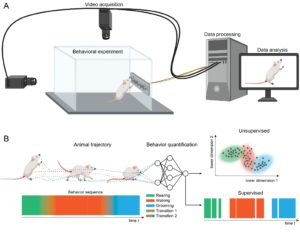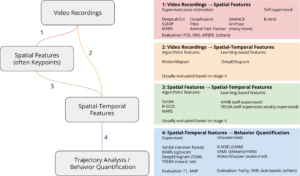https://arxiv.org/abs/2204.02842. We hope that it helps new users get started with video recordings and analysis and also encourages more widespread use and continued development of the tools.
The paper provides a brief overview on video methods, with a focus on tools for pose estimation. The first part of the paper covers what we felt is needed to create a basic setup for video recordings in animal experiments. Advice is given on hardware and software (cameras, data formats, positioning of cameras, materials used in behavioral arenas, and considerations for lighting). Next, the paper describes a typical analysis pipeline for using pose estimation tools and analyzing results from them with supervised and unsupervised machine learning algorithms and other approaches. 
The second part of the paper covers what the group considered to be best practices for data sharing and tool evaluation. We emphasized the need for a common data format, more widespread sharing of raw and processed videos, and the need for direct comparisons among existing and in-development methods and more attention given to how the parameters of a given method influence the accuracy and speed of pose estimation models. This part of the paper closes with a discussion of the need for benchmarks and guidelines for code and reproducibility in animal pose estimation.



Recent Comments